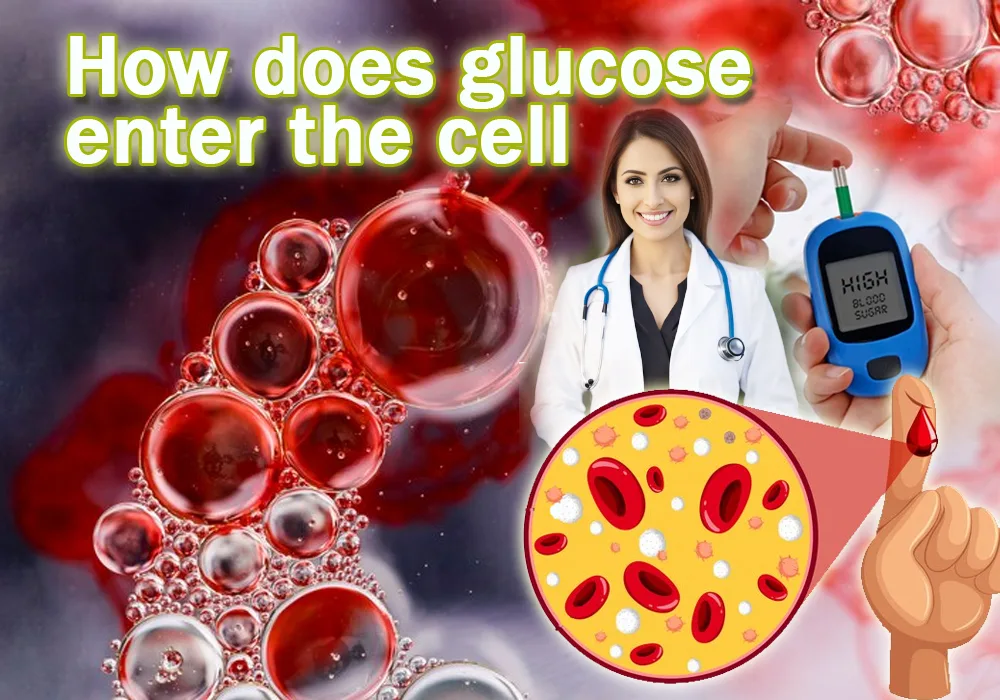How does glucose enter the cell membrane for glycolysis? Are they active or passive or facilitated diffusion?
Through Facilitated diffusion glucose gets into the cell membrane. It doesn’t take energy to operate this passive transport method. Through facilitated diffusion, glucose molecules can travel across the cell membrane along a concentration gradient, from an area of high concentration (outside the cell) to an area of low concentration (inside the cell), thanks to the binding of specialized proteins known as glucose transporters.1
Glucose transporters are specialized carrier proteins that facilitate glucose uptake into cells. Research shows that there are now five different kinds of glucose transporters. The tissues (heart, skeletal muscle, and adipose tissue) need insulin for glucose absorption.
An insulin-dependent mechanism recycles this glucose transporter quickly between microsomal storage sites and the plasma membrane.
As we all know, glucose is the primary source of all basic and functional units of the body called cells. Hence, glucose transporters are here to reach the glucose from the blood to each body cell.
Recent studies show that: There are two types of glucose transporters:
1-Sodium-glucose-linked transporters.
2-Facilitated diffusion glucose transporters.
Polarized and large glucose molecules can’t enter the cell through simple diffusion.
Hence, it enters the cell through a particular protein present on the surface of each cell. these structurally related transport proteins are called glucose transporters. These are sodium and facilitated diffusion glucose transporters.
Structure and functions of glucose transporters:
Sodium glucose-linked transporters comprise transmembrane helices of carboxyl and amino terminals and extracellular spaces. Whereas, GLUTS have membrane-spanning carboxyl and amine groups intracellular. Human beta cells consist of glucose sodium linked to the beta cells of the pancreas.
The functions of these transporters are:
1-Glucose enters the cell through these transporters.
2-Metabolism of glucose through phosphorylation
Hence, these transporters’ functions involved transportation, absorption, and reabsorption, and metabolism (breakdown of glucose) also involved.
Step-by-step procedure; how glucose enters the cell:
First glucose binds to the glucose transporters on the surface of the cell membrane. Each protein has a particular binding site with glucose like a lock and key.
Glucose-protein binding may bring shape changes and glucose close to the cell membrane.
This shape-changing cause opens the channel and causes the glucose from the blood into the cell.
Once glucose is released from the protein, it reverts to its original shape, ready to pick the following glucose molecule.
This facilitated diffusion enables glucose to enter cells much faster than simple diffusion.
Diseases related to the changes in these glucose transporters:
If a genetic mutation occurs in these transporters lying on intestines glucose-galactose malabsorption disorder may occur. It may lead to stomach disturbances. Treatment of diarrhea is the oral administration of lactose and glucose.
If the mutation occurs glucose transporters lie in nephrons and kidney regions. The reabsorption of glucose from glomerular filtrate increases the amount of sugar in the urine.
The transporters’ activity significantly increased threefold for glucose absorption and transportation in diabetic patients. It is correlated with insulin secretions in beta cells. Hence, increased levels of these transporters may cause increased uptake of glucose.
These transporters maintain the amount of glucose through intrahepatic bile ducts. These maintenances or glucose reabsorption may create an osmotic gradient and favor the flow of water outside; leading to a decrease or maintenance of bile volume.
In diabetic patients, blood glucose concentration is high, leading to high bile glucose concentration. Hence, increased glucose transporters cause low bile volume and vice versa.
Transporters in the epithelial salivary glands are responsible for reabsorbing ductal water reducing the amount of water and saliva. Research suggests that in diabetic and hypertensive patients increased transporters lead to decreased salivary flow which causes more openness to oral complications.
Gene mutation of glucose transporters at the intestinal level may alter glucose absorption and transportation functions. It may cause many diseases.
Innovative treatment of diabetes based on these transporters’ research2:
Transporters 2 types present renal tubules targeted for the treatment of diabetes mellitus. Decreasing the 2 mediated transporters may cause increased secretion of glucose through urine without causing hypoglycemia. The Federal Drug Administration approved the drug dapagliflozin for use in type 2 diabetes militias.
Disease diabetic militias may signify the importance of glucose transporters; this causes an innovative way of controlling blood sugar and innovation in diabetic treatment. It is also essential in the oncology department.
The higher glucose level in the blood may cause enhanced cancer activity the excessive growth of malignant cells of a tumor requires high energy, which comes in the form of glucose.
how does glucose enter the cell insulin?
Insulin attaches to receptors on the surface of cells, bringing GLUT4 molecules closer to the surface, much like a key fits into a lock. It helps to enter the glucose from the blood into the cell.
The body produces blood sugar from the food you consume. The beta cell of the pancreas releases insulin when blood sugar reaches your system. For the body to use blood sugar as fuel, insulin must let the molecule enter the cells. The liver is notified by insulin to conserve blood sugar for future consumption.
Frequently Ask A Question:
How does glucose enter the cell passive transport?
For these cells to absorb glucose from the blood, insulin causes GLUT4 on membranes. Because of the passive nature of this process, the amount of sugar entering our cells is directly related to our intake, until all our channels are fully utilized.
How does glucose enter a cell from the tissue fluid?
Glucose is transported into your cells by the hormone insulin in interstitial fluid. Insulin is the ‘key’ that opens the cell and lets glucose in. This supplies the energy your body requires. The liver retains excess glucose.
How is glucose transported into our cells where it enters our bodies?
Via glucose transporters found on the plasma membrane, glucose enters the cells. When glucose enters cells, insulin is a key player.




Leave a Reply